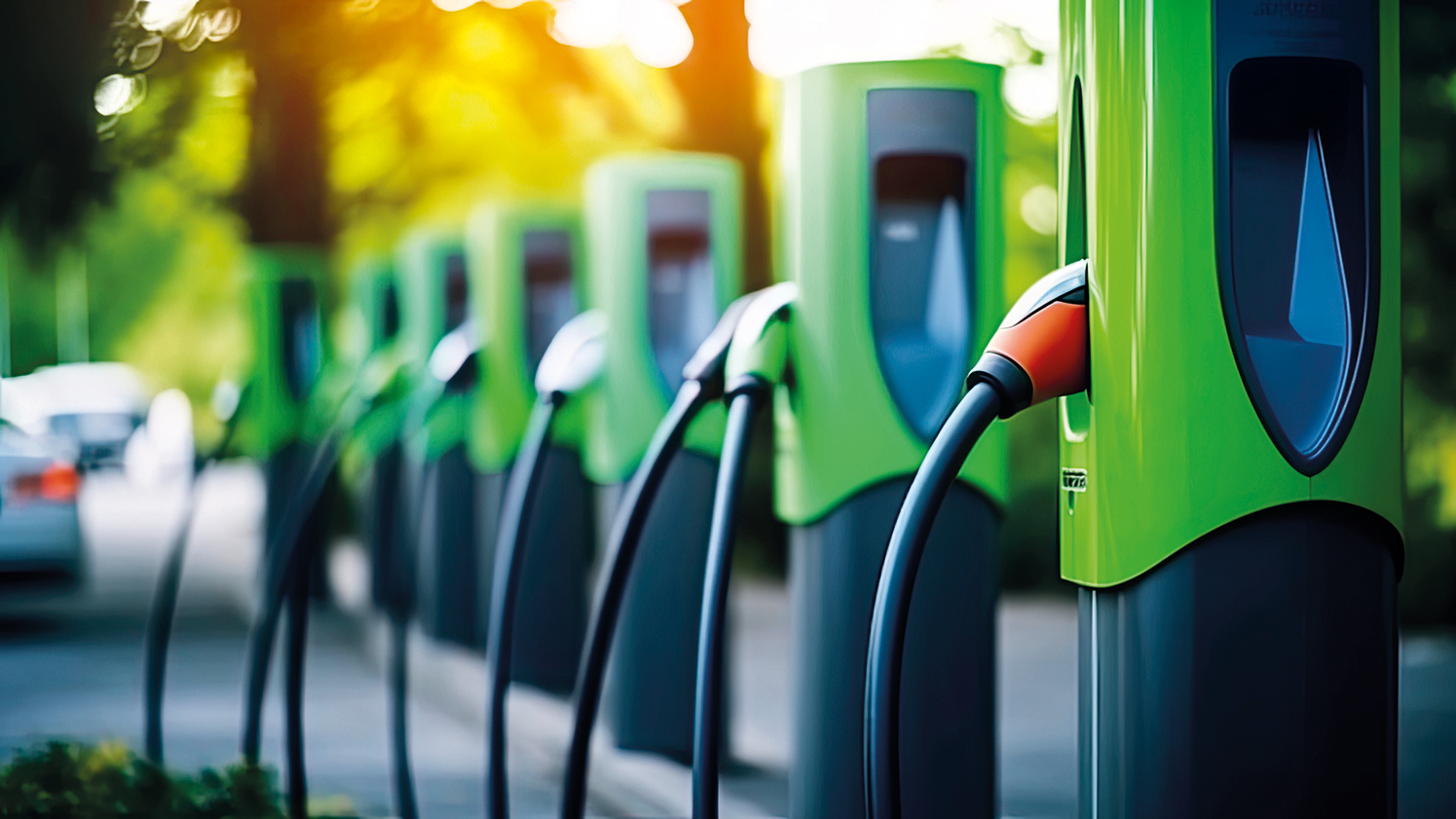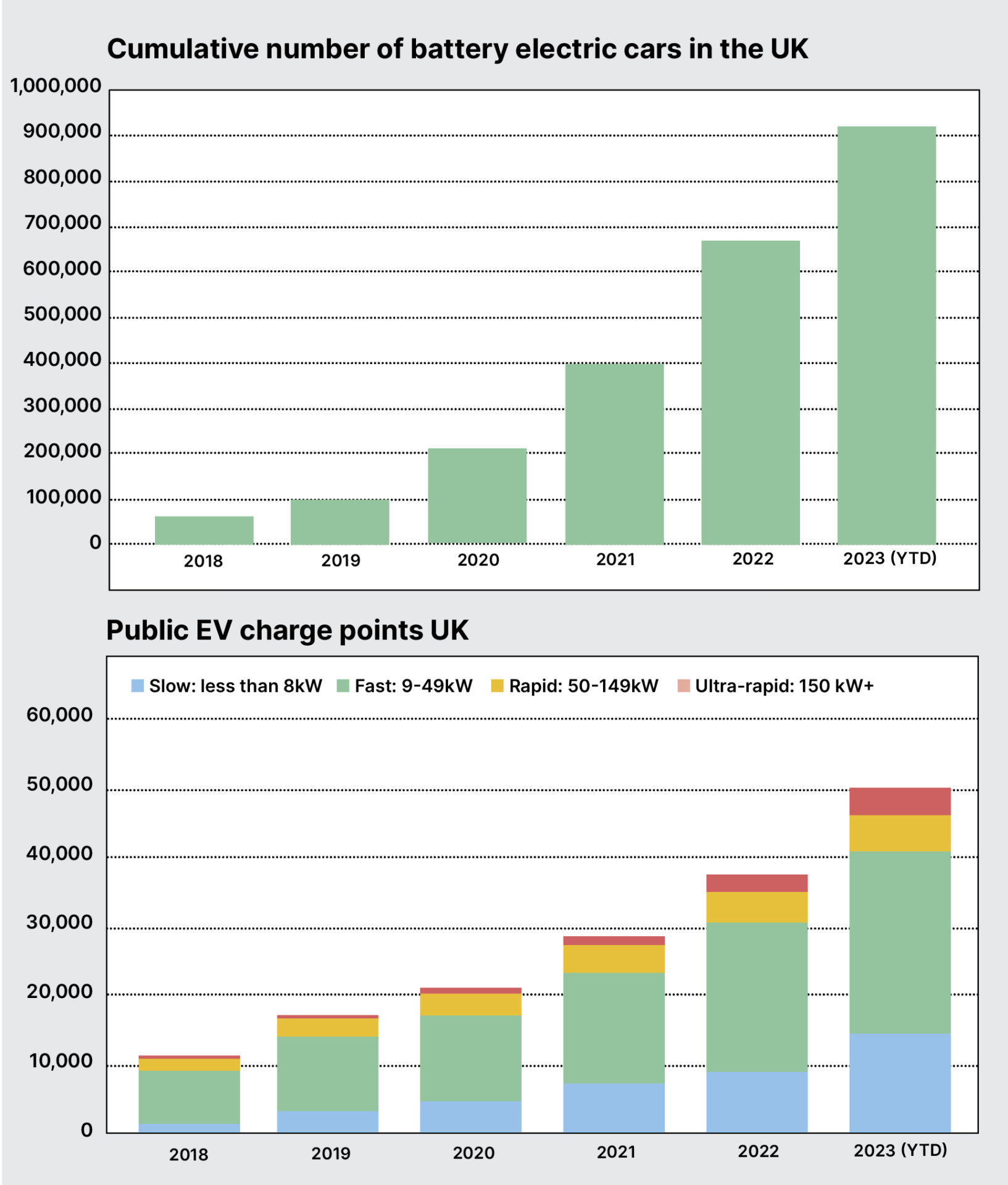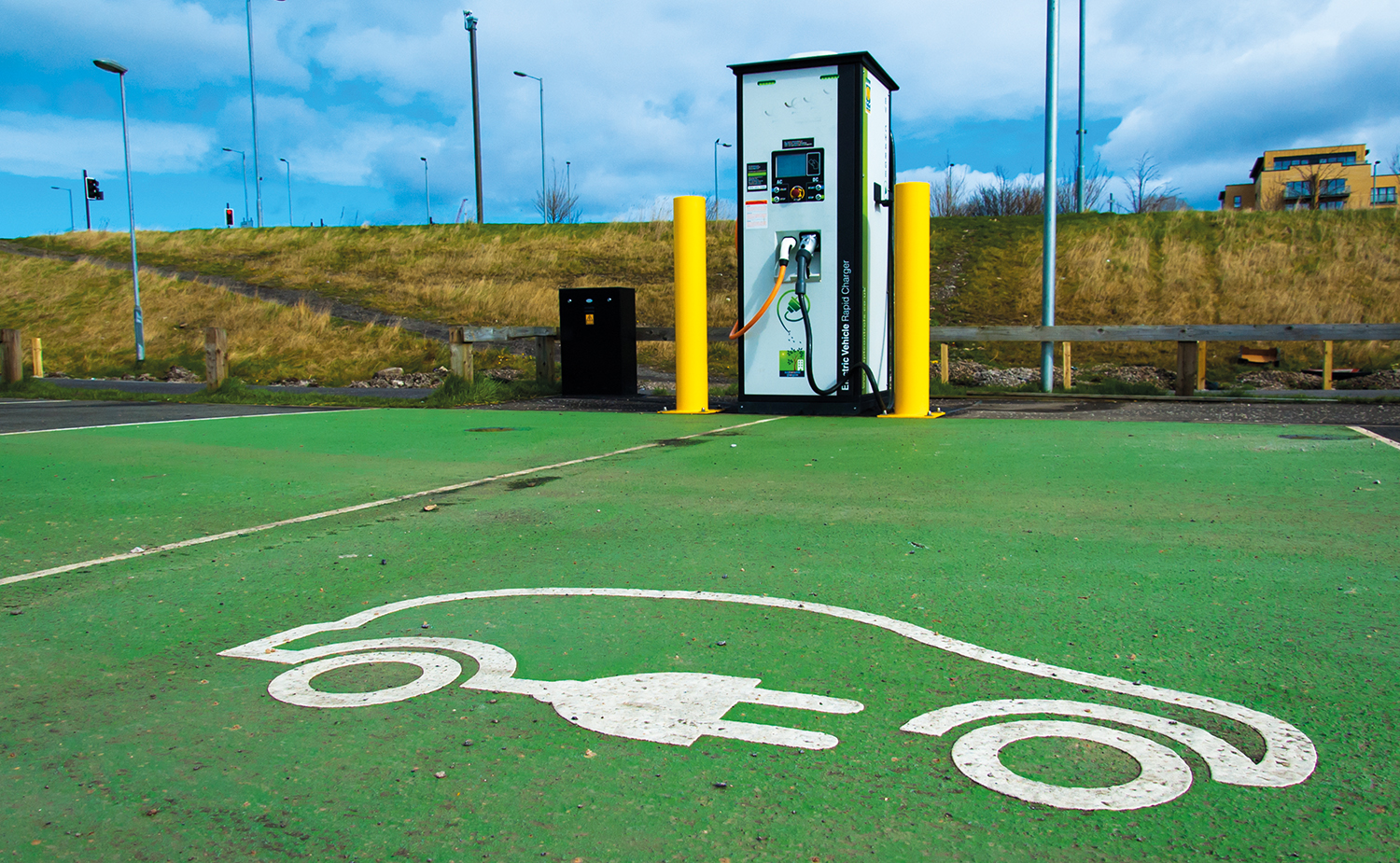CPD: Electric vehicle charging infrastructure – Construction …
 Mark Williamson
Mark Williamson
 (Image: Dreamstime.com)
(Image: Dreamstime.com)
In this CPD, BEAMA explores the business opportunities and technical requirements involved in creating the national electric vehicle charging infrastructure. By Mark Williamson.
There are currently around 900,000 battery electric vehicles (EVs) and 50,000 public chargepoints in the UK. It is anticipated that there will be between eight and 11 million EVs on UK roads, which the government expects will require 300,000 public chargepoints as a minimum, by 2030.

What you will learn in this CPD
- Types and applications of EV chargers
- Infrastructure considerations when installing EV chargepoints
- A case study of EV chargepoint installation
As the number of EV drivers increases, those without access to off-street parking will need charging solutions, depot charging for commercial vehicles and rapid charging for on-the-go charging in cities and along transport routes.
Government and private sector investment in EV charging infrastructure will be considerable. Although this presents a huge engineering and construction challenge, it is also a great business opportunity for the UK construction industry.
EV chargers: types and applications
The UK EV charger market and technology have quickly evolved over the past decade. There are two distinct types of EV charging systems: alternating current (AC) and direct current (DC). Electric power is supplied as AC. However, an EV battery is always charged using DC. The current needs to be converted from AC to DC, and where this occurs depends on the type of chargepoint.
Home and workplaceFor private charging at home or the workplace, main considerations will include ease of access, available power supply and the type of charge required. Solutions available for home and workplace locations are mostly single-phase AC chargepoints, available from 3.6kW to about 7kW. A 22kW chargepoint is unusual for a home but may be used in some workplaces.
About chargers
AC chargers: The mains AC from the grid is supplied to the vehicle, and equipment built into the vehicle converts the current to DC to charge the battery. Space and weight considerations can limit the power of chargers built into the vehicle.
DC chargers: The mains AC is converted to DC current by the charger within the chargepoint before it is supplied to the vehicle. Because the DC charger is not part of the vehicle, it is less limited by space or weight and can accommodate much greater charging currents. The charging times for the batteries can be much shorter.
Fleet depotsBusinesses looking to electrify their fleets operating from a depot will have different considerations from businesses installing solutions at office locations. The type of operation and duty cycle, available network capacity and physical space in the depot will be key factors in determining charging requirements. These solutions can be wall-mounted, pole-mounted or standalone. Depending on the power required, they may be either AC or DC chargepoints.
Private on-street AC chargingSome EV users do not have facilities for off-street parking. There are chargepoints (from 7kW to 22kW AC) that can be sunk into the pavement or road in residential on-street settings. This option may require dedicated on-street parking bays and may not be suitable for all on-street charging.
Public chargepoints
Dedicated sites and forecourt chargingThe forecourt of the ‘petrol station of the future’ will typically contain multiple high-power chargers, with an average charging time of around 30 minutes. In the future, these locations may need to be newly constructed to meet user needs, rather than reengineered existing buildings or forecourts.
Rapid charging hubsHubs of rapid chargepoints, such as those found at motorway service areas, are the form of charging infrastructure that most resembles the infrastructure for internal combustion engine (ICE) vehicles. Chargepoint operators are investing in significant grid connection upgrades that enable sites of sixto 12 chargers or more at speeds of up to 350kW.
Electrical and civil considerations for installing new EV chargepoints
EV chargepoints are typically connected to electricity network infrastructure owned and maintained by distribution network operators (DNOs) or independent distribution network operators. The network capacity used by an EV chargepoint varies from one charging station to another depending on the location, number and load of chargepoints, other onsite facilities and the integration with other energy systems such as solar generation or battery storage systems.
 The number of chargepoints is growing with the rise of EV use
The number of chargepoints is growing with the rise of EV use
The electrical infrastructure of the network (switchgear, transformers and cabling) is unique to each site and determined by factors such as the funds available, resilience needs, supply chain conditions, scalability plans and, most importantly, technical specifications (especially the voltage and capacity of the grid connection).
Before construction begins, technical specifications and design of the infrastructure between the electricity network and electric vehicle supply equipment (EVSE) will be determined by an independent connection provider (ICP) or DNO.
Network engineering factorsNetwork capacity upgrades may be required in certain locations where there previously has not been infrastructure requiring high power, or where a faster chargepoint is intended to be installed.
Some sites may not require network upgrades before installation, so exploring where current capacity exists is an important step in site location decisions to avoid unnecessary and significant upgrade costs. Data on grid capacity around the UK exists to assist with site selection.
The Energy Networks Association (ENA) has defined grid connection codes relating to import and export control. These are particularly important for load management and bidirectional EV charging:
- Engineering Recommendation (EREC) G99 (Requirements for the connection of generation equipment in parallel with public distribution networks).
- Engineering Recommendation (EREC) G100 (Technical requirements for customers’ export and import limitation schemes).
Designers, installers and end users should ensure compliance with the most recent iteration. More information can be found at www.energynetworks.org[2].
WiringWith few exceptions, electrical power is provided to the EVSE (and accordingly to the EV) using wires governed by the British Standard 7671, the Wiring Regulations, which is co-published by the Institution for Engineering and Technology (IET) and BSI. All new and amended electrical installations are to conform to the requirements of BS 7671:2018+A2:2022. BS 7671 s.722 relates specifically to EV charging installations.
PEN fault protectionMany UK electricity supplies combine the earth and neutral into one protective earth neutral (PEN) conductor using a supply system known as protective multiple earth. It becomes unsafe if the PEN conductor is disconnected from the earth. If someone simultaneously touches something connected to the PEN conductor (such as an EV plugged into a chargepoint) and something at true earth potential (such as a metal fence), the residual current circuit breaker will not operate, and the person could receive a fatal electric shock.
 The network capacity varies according to location and facilities (Image: Dreamstime.com)
The network capacity varies according to location and facilities (Image: Dreamstime.com)
To protect against this, it is necessary to either provide a dedicated earth to the chargepoint or fit a PEN fault protection device that will automatically disconnect the PEN when a dangerous voltage is detected. Some of the latest chargepoints incorporate PEN fault protection into the device.
BS 7671:2018+A1:2020 s.722.411.4.1 and the IET Code of Practice for Electric Vehicle Charging Equipment Installation provide further guidance.
TransformersThe quantity and ratings of transformers required depend on the capacity of the grid connection and the voltage at which the connection is secured. Installers should match the rating of the transformer to the load profile of the charging station and the maximum load anticipated at any point.
AccessibilityThe installation of charging stations should allow and encourage inclusive usage, especially by users with reduced mobility or other special needs. Industry groups and other bodies, such as the charity Motability, worked with government to publish a specification for the accessibility of chargepoints.
ComplianceOnly EV charging devices that are compliant with the Electric Vehicles (Smart Charge Points) Regulations 2021, Public Charge Point Regulations 2023 and UK Wiring Regulations should be installed.
EV charger installersEV charger installers should be part of a competent person scheme (CPS) and the installers must be part of a CPS for customers to be eligible for the government grants available for workplace chargers.
Case study: The Hilton Garden Inn, Abingdon
Connected Kerb supplied discreet and sustainable chargepoints for a ‘long-dwell’ location at an Oxfordshire hotel.
 Chargepoints were installed at the Hilton Garden Inn
Chargepoints were installed at the Hilton Garden Inn
The Hilton Garden Inn in Abingdon, Oxfordshire, wanted to add easy-to-use charging infrastructure in line with demand, avoiding large numbers of unused chargepoints wherever possible but providing enough for customers and staff with electric vehicles.
The hotel recently underwent a refurbishment and wanted the charging points to be visually discreet. Sustainability was also an important consideration since the chain is the first major hotel company to establish the Science Based Targets initiative to reduce greenhouse gas emissions in line with the Paris Agreement.
The Hilton Garden Inn’s car park is a ‘long-dwell’ location where staff and customers park their cars for long periods. The hotel signed a contract with Connected Kerb for the installation of four dual Gecko chargepoints to meet these requirements.
The dual Gecko chargers blend into the surrounding environment and allow two vehicles to charge simultaneously from one unit. The solution meets the hotel’s requirement of keeping provision aligned with demand.
Although all chargepoints have now been activated, Connected Kerb does provide the option to install enabling infrastructure underground. The above-ground socket can be added at a later date once EV demand rises.
The hotel found Connected Kerb’s offer appealing as a tool for retaining staff with an electric vehicle who otherwise may not have somewhere reliable to charge at their own home.
It was also drawn to the sustainable credentials of the charging infrastructure, which is made predominantly from recycled materials.
Mark Williamson is electric transport infrastructure manager at BEAMA[3], the UK trade association for manufacturers and providers of energy infrastructure technologies and systems.
Further reading
www.beama.org.uk[4] BEAMA and Green Finance Institute Guide to EV Infrastructureshop.theiet.org[5] IET’s Code of Practice for Electric Vehicle Charging Equipment InstallationGOV.UK[6] Guidance: Connecting electric vehicle chargepoints to the electricity networkGOV.UK[7] Building Regulations – Part S (E,W) / Part 7 (S) – EV Charging Infrastructure
Useful references
BS EN IEC 61851-1 Electric Vehicle Conductive Charging SystemBS 7671:2018+A2:2022 Requirements for Electrical InstallationsBS 7671:2018 s.722 Electric Vehicle Charging Installations
CPD Module Content
Information in this CPD was correct at the date of publication.
References
- ^ Take the test (constructionmanagement.co.uk)
- ^ www.energynetworks.org (www.energynetworks.org)
- ^ BEAMA (www.beama.org.uk)
- ^ www.beama.org.uk (www.beama.org.uk)
- ^ shop.theiet.org (shop.theiet.org)
- ^ GOV.UK (www.gov.uk)
- ^ GOV.UK (www.gov.uk)